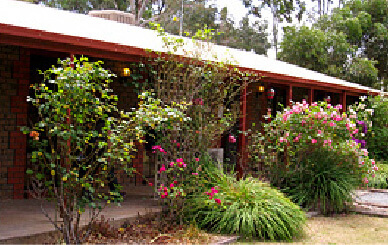These days you can find the Australian Labradoodle in several different and beautiful colours. We hope that you find the below colour information informative and useful.
NOTE: It is normal that all colours may show bleaching and discolouration over the topcoat, referred to as sunning, this is quite expected and acceptable. The Australian Labradoodle is an active dog and often a service dog that enjoys the outdoors.


Chalk
This colour should be a white colour but when compared to white is rather a chalky white in colour.
Nose pigment to be Black.


Cream
This colour should be a creamy colouring sometimes with apricot/gold tinting, all shades of cream are acceptable. Nose pigment to be Black.


Gold
This colour has also been referred to as “apricot,” should be the colour of the inside of a ripe apricot to varying shades of rich Gold in colour. A true Gold should not have a lighter root than the outer coat and preferable have an even colouration over the entire body. This colour may fade as the dog grows older. Nose pigment to be Black in colour.


Caramel
This colour ranges from a rich gold through to a deep red. The preferred colour is very much the same colour as its namesake “caramel” with even colouration over the entire body. Nose pigment to be Rose in colour.


Red
This colour should be a solid even rich red in colour. A true red should not be lighter at the root than the outer coat. Reds can fade as the dog grows older. Nose pigment to be Black. This colour is rare to get.


Black
This colour should be a solid black in colour and should not have sprinkling of any other colour through the coat. Nose pigment to be Black.


Blue
This colour should be a dark to medium smoky blue in colour. Blues are born Black but will have a Blue/Grey skin pigment. The blue coat colour will develop over time (1-3yrs) but as a developed adult should have an even coat colour. Nose pigment to be Blue/Grey [matching the skin pigmentation]. This colour is rare to get.


Silver
This colour can range in shades from very light pewter in colour to a dark charcoal in colour, it is preferred to see an even colour through the coat but acceptable to see uneven layering of colour in the coat. Silvers are born Black with the coat colour developing over time (1-3 yrs.). Nose pigment to be Black.


Chocolate
This colour should be a dark rich chocolate in colour. True chocolates are born almost black in colour and maintain the rich dark colour throughout their lifetime. Colour should be even. Nose pigment to be Rose in colour [matching the coat colour].


Cafe
This colour ranges from a milk chocolate to silver-beige in colour and will develop over time (1-3yrs). Nose pigment to be Rose in colour [matching the coat colour].


Lavender
This colour has a definite smoky lavender chocolate colour giving an almost pink to lilac appearance. Lavender dogs are born chocolate and will develop over time (1-3yrs). Nose pigment to be Rose in colour [matching the coat colour].
[Rare colour group]


Parchment
This colour is a creamy beige chocolate colour reminiscent of a cup of coffee with a generous addition of milk. Parchment dogs are born milk chocolate and will develop over time (1-3yrs). From a distance adult dogs can be mistaken for a dark or smoky cream. Nose pigment to be Rose in colour.


Parti-Colored
At least fifty percent white, with spots or patches of any other acceptable solid colour. The head can be of a solid colour, but white muzzle, blaze, or white muzzle/blaze combination (preferably symmetrical) are equally acceptable. Full or partial saddles are acceptable, as long as they do not exceed the colour proportion but are not preferred. Ticking in the white of the coat is acceptable but not preferred. Any colour nose pigment acceptable but preferable to follow pigment requirements of the patch colour colour.
[Rare colour group]


Phantom
Solid base colour with sharply defined markings of a second colour appearing above each eye, on the sides of the muzzle, on the throat and forechest, or in a chin and forechest bowtie pattern as well as on all four legs and feet, and below the tail. A phantom without clearly defined face markings or one that presents with its whole face coloured in the second colour is acceptable, as long as it maintains all the other specified body markings. Any combination of acceptable colours is allowed. Nose pigment to follow pigment requirements of the Solid base colour.
[Rare colour group]

Abstract
Less than fifty percent white, with the remaining percent any other acceptable solid colour. Nose pigment to follow pigment requirements of the Solid base colour.
*Abstract Adult photo unavailable [Rare colour group]
Sable
A coat represented by black-tipped hairs on a background of any solid colour, with no particular pattern/location designated for such hairs. Nose pigment to follow pigment requirements of the Solid base colour. *Photo unavailable
[Rare colour group]


Brindle
Should have an even and equal distribution of the composite colours with layering of black hairs in regions of lighter colour (usually, chalk/cream/gold/red, cafe/lavender/parchment, or silver) producing a tiger-striped pattern. Nose pigment to follow pigment requirements of the darker or base colour.
[Rare colour group] This colour is rare to get.


Multi-Patterned
A dog that clearly exhibits more than one of the acceptable colour patterns, such as a Parti with full or incomplete phantom markings (facial markings with or without presentation of the diamond under the tail), or a Phantom with additional abstract markings, etc. (photographed is a Silver Brindle-Phantom with Abstract markings.) Nose pigment to follow pigment requirements of the Solid base colour.
[Rare colour group]
For labradoodle sizes, please go to our Size link.
For pictures and more information concerning the coat types of the Australian Labradoodle, please go to our Coat Types link.
